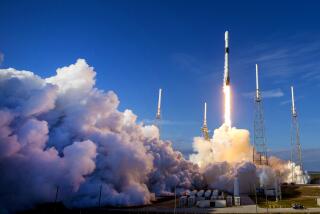Probe on 7-Year Mission Survives Proton Storm From Solar Flare
A NASA spacecraft on a seven-year mission to collect comet dust survived a zap from an enormous solar flare this month.
The Stardust spacecraft was hit Nov. 9 by a storm of high-energy particles 100,000 times more intense than usual, according to the Jet Propulsion Laboratory in Pasadena, which manages the mission.
The spacecraft was 130 million miles away from the sun when it was struck, the National Aeronautics and Space Administration said.
The flare interfered with the spacecraft’s star cameras, leaving it unable to use its primary method of orienting itself in space.
The craft automatically put itself in standby mode and waited for communication from Earth. After its first star camera failed, it tried switching to a second camera but had no success.
Scientists left the spacecraft in standby mode to allow protons from the flare to diminish, and on Nov. 11 sent commands to reset the first star camera and turn it back on.
The spacecraft was put back in normal operation several days later; images taken after the flare subsided showed the camera fully recovered from the proton hits.
Stardust was launched in February 1999 on a mission to intercept the comet Wild 2 in 2004, collect dust flying off its nucleus and return to Earth in 2006 to drop off the samples in a parachute-equipped capsule.





